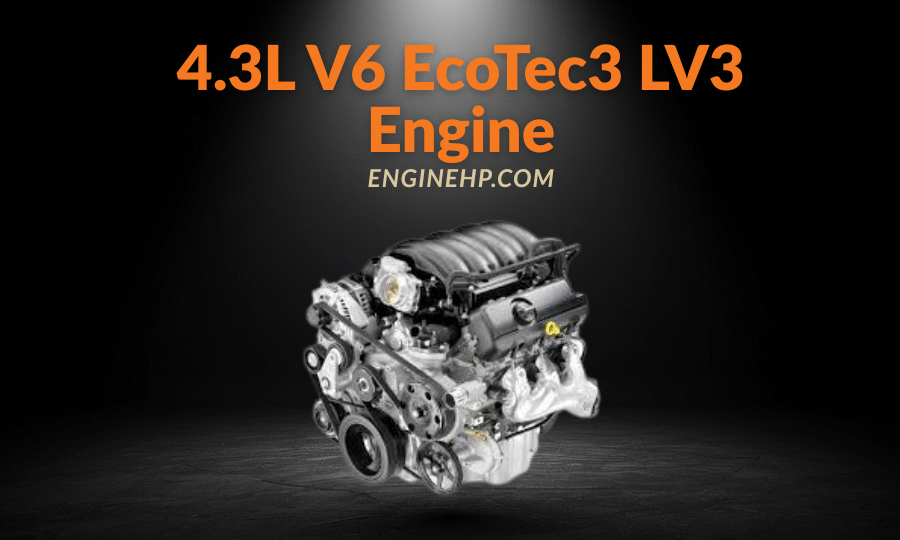
GM Engines: 4.3L V6 EcoTec3 LV3 Engine Hp, Reliability, and Performance
4.3L EcoTec3 V6 Engine Built to Last IntroductionThe engine functions like the heartbeat of a truck. Some beat loudly and quickly and pound regularly for many years. Its 4.3L V6 EcoTec3 engine, manufactured through General Motors, is in the second category. It powers millions of vans and pickups in a steady and durable workhorse. It is a symbol of endurance, efficiency and quiet strength whether you operate it each day, operate the fleet of your business, or like trucks.
A Quick Overview of the LV3 Engine
The LV3 is a part of GM’s EcoTec3 family of vehicles that was released during 2014 and powers light-duty cars and vans. The LV3 is a naturally aspirated V6 that is distinct from GM’s small-block V8s, as it is more simple and reliable.
Important Specs:
| Manufacturer | GM Tonawanda plant (Tonawanda Engine Plant) in New York, USA |
| GM Ramos plant in Ramos Arizpe, Mexico | |
| Production years | 2014-2021 |
| Cylinder block material | Aluminum |
| Cylinder head material | Aluminum |
| Fuel type | Gasoline |
| Fuel system | Direct Injection |
| Configuration | V |
| Number of cylinders | 6 |
| Valves per cylinder | 2 |
| Valvetrain layout | OHV |
| Bore, mm | 99.6 mm (3.92 in) |
| Stroke, mm | 92.0 mm (3.62 in) |
| Displacement, cc | 4,301 cc (262cu in) |
| Type of internal combustion engine | Four-stroke, naturally aspirated |
| Compression Ratio | 11.0:1 |
| Power, hp | 285hp (213 kW)/ 5,300 (gasoline) |
| 297hp (221 kW)/ 5,300 (E85) | |
| Torque, lb ft | 305 lb-ft (413 Nm)/ 3,900(gasoline) |
| 330 lb-ft (447 Nm)/ 3,900(E85) | |
| Engine weight | – |
| Firing order | 1-6-5-4-3-2 |
| Engine oil capacity, liter | 5.7l (6.0 qt) with oil filter |
| Engine oil weight | SAE 5W-30 semi-synthetic motor oil |
| Oil recommendations and capacity may vary depending on the car model, year, and market. Please check the service manual specific to your vehicle! | |
| Oil change interval, mile | 7,500 (12,000 km)/12 months |
| Cars with this engine | Chevrolet Silverado 1500, GMC Sierra 1500, Chevrolet Express, GMC Savanna |
The LV3 is designed to tackle the tough work of hauling trailers, towing and towing construction equipment, but is efficient for everyday work.
Performance: Steady and Dependable
Its 4.3L V6 EcoTec3 engine doesn’t boast the stunning numbers of turbocharged competitors, however it performs well on the road.
- Strong low-end torque: Strong torque at the low end makes it simple to lift things off or move off the line in confidence.
- Smooth acceleration: It’s not the fastest of its kind however, it provides the power you need in a steady, reliable manner.
- Towing capability: Trucks that use the LV3 can haul up to 7,900 pounds when properly set up.
It could be thought of as a reliable member of the construction team. It doesn’t boast and boasts, but it shows up and completes the task.
Engineering Features That Make It Unique
The LV3 is much more than a basic engine. GM introduced new technology to keep it current in a time where efficiency is a major factor.
Notable Features:
- Direct fuel injection: Direct fuel injection allows you to make the most use of your fuel, and reduces polluting.
- Variable Valve Timing (VVT): (VVT) is a method of changing the way the valves function to achieve an optimal equilibrium between power and fuel efficiency.
- Active Fuel Management (AFM): Switches off cylinders as you drive slower to save gas.
- E85 FlexFuel capability: E85 FlexFuel capability allows you to run your engine on gasoline or ethanol mix.
- Cast-iron block: Cast-iron block is more durable and stronger and therefore ideal for heavy-duty work.
These characteristics make the gap between traditional toughness and contemporary effectiveness smaller.
Reliability: Built for the Long Haul
Its 4.3L V6 EcoTec3 LV3 engine is at its peak in terms of reliability. If maintained properly, users of Silverados and Sierras claim they can drive more than 100,000 miles with no significant issues.
Strengths:
- Proven V6 architecture: V6 architecture has been tried based on GM’s small block design, but updated to be used today.
- Simpler design: There are fewer moving parts than turbocharged engines. This reduces the risk of failure.
- Fleet trust: The fleet trust is a proof of how trustworthy it is because it is employed often on commercial trucks.
Watch Points:
- Oil consumption: Some owners have reported that older vehicles use more oil than normal.
- AFM system issues: If you do not change the oil, deactivating cylinders can result in problems regarding the lifters.
- Carbon buildup: direct injection may leave a layer of carbon on intake valves.
A J.D. Power reliability study from 2022 showed that GM’s V6 trucks are superior to the average of their class. This confirms the LV3’s track record as being reliable.
Fuel Economy: Respectable for Its Class
The LV3 performs well in the fuel tank for a truck of the full size that has an engine with a V6.
- City MPG: 16-17 miles per gallon
- Highway MPG: 21-22 miles per gallon
- Combined average: around 18-19 MPG
These numbers aren’t extraordinary however, they’re far superior to the older V8 vehicles. They are able to save more fuel but they don’t lose any power. A balance of fuel efficiency and power is especially beneficial for companies that manage fleets.
Buyer’s Perspective: Why Choose the LV3?
The 4.3L V6 EcoTec3 LV3 engine is a good fit for a variety of reasons for individuals:
- Lower upfront cost: The engine is generally cheaper that a V8 motor found in trucks.
- Everyday practicality: Plenty of power for driving all day, and towing on weekends.
- Durability: A good option if you plan to maintain your truck for a long period of time.
- Ease of service: It is easy to maintain Parts are simple to locate mechanics are trained to operate on the platform.
The LV3 is a type of reliable work boot – sturdy, comfortable and built to last. Its 5.3L V8s and 6.2L V8s are similar to high-performance running shoes.
Business Perspective: Fleet and Work Use
Reliability and affordability are two of the most crucial aspects for companies. This is why many fleets select the LV3.
- Lower purchase cost: Cost savings on purchasing are more expensive up front than engines that generate more power.
- Longevity: Fleet managers claim that the LV3 is ideal for service with high mileage.
- Fuel flexibility:The capability to make use of ethanol is what makes it more adaptable.
- Resale value: The trucks that have LV3 engines maintain their prices for resales high due to the fact that they last for a long period of.
GM announced in the year 2019 that over 20 percent in its Silverado 1500 sales were the LV3. Businesses are aware of the importance of how beneficial it can be.
Comparing to the M40B16 Engine
At first, it might appear odd to look at the M40B16 engine, that is an 1.6L BMW four-cylinder from the 1990s, with the LV3. However, the differences reveal the way engines are designed for different tasks.
- M40B16 Engine: The M40B16 engine produces around 100 horsepower. It was designed to make small cars more efficient in fuel consumption.
- 4.3L V6 EcoTec3 LV3 Engine: The 4.3L EcoTec3 V6 engine is powered by 285 horsepower, and 305 pounds of torque. It was designed for the rigors of heavy-duty towing and work.
The M40B16 engine for the simplicity it was, and that’s why it remains an integral element in BMW history. The LV3 however, for instance is a symbol of American truck culture, with its sheer power and reliability.
Real-World Example: Silverado with the LV3
Consider how you could manage a small landscaping company. You’d put the tools into your Silverado and then connect an trailer and a mower, then leave. The LV3’s low-end torque makes the simple to drive away from stoplights and its excellent gas mileage reduces costs. It’s still going well after 150,000 miles, that’s why both business and families rely on it.
Maintenance Tips for Longevity
Are you looking to travel more than 200k miles? Here’s how to maintain your vehicle’s LV3 top condition:
- Regular oil changes: Replace the oil at least every 5,000-7,000 miles. Use synthetic oil.
- Check AFM system: If you are having issues with your lifters, you should check your AFM system and switch off using solutions from the aftermarket.
- Carbon cleaning: Cleaning the carbon by blasting walnuts once every 70,000-90,000 miles could aid.
- Cooling system maintenance: To ensure your cooling system functions properly, you should make sure to flush your coolant every 60,000 miles in order to prevent the coolant from getting too hot.
- Transmission care: The maintenance of your transmission means keeping the fluid in good condition, particularly in the case of the transmission 6L80 or 8L90.
The preventive approach is what makes the LV3 the perfect long-term partner.
Aftermarket and Tuning Options
The LV3 isn’t a high-performance engine, though it does offer some support for aftermarket products.
- Cold air intakes and exhausts: Exhausts and intakes of cold air improve the airflow and sound better.
- ECU tuning: ECU tuning allows tiny improvements in torque and horsepower.
- AFM delete kits: Remove issues with lifters to make the kit last longer.
It’s not a racing platform, but more of a canvas for reliability. If you’re the right person, minor adjustments can make it easier to drive.
Why It Still Matters in 2025
Why is this 4.3L V6 EcoTec3 engine matter in a world moving towards electric vehicles?
- Affordability: A good option for trucks of full size which won’t cost a fortune.
- Proven reliability: Reliability that has been proven: It’s much easier to believe in than new technologies that haven’t been tested yet.
- Infrastructure: There is no requirement for charging stations making it ideal for remote areas.
- Resale demand: Demand for used trucks that have LV3 engines remains popular because they last for a long time.
The LV3 can still be useful to individuals and companies who want simple features.
Important Points
- Powerful and dependable: With 285 horsepower and 305 pounds of torque it performs effortlessly.
- Reliable design: The design is solid featuring a cast-iron block directly injected, as well as the tried-and-true V6 design.
- Business-friendly: Business-friendly with low operating costs and lots of people making use of the fleet.
- Buyer value: Cheap at first, but long-lasting.
- Historical comparison: For strength it’s stronger than the M40B16 engine. It is a demonstration of how engineering adjustments can serve its purpose.
Conclusion
The 4.3L EcoTec3 V6 engine isn’t flashy but it’s practical. It’s got the capacity of towing capability, reliability to endure, and the capability to cut costs. If you’re looking for a vehicle that will run smoothly in the future it’s a good option for the average consumer. It’s a great fleet option for businesses that provides an ideal balance between price and endurance. The LV3 reminds us that in some cases, the simplest and the most reliable method prevails.
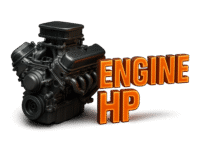

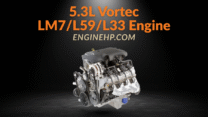
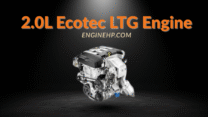
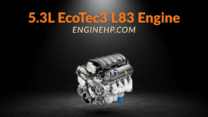
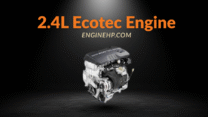
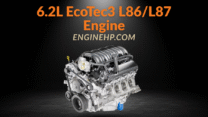
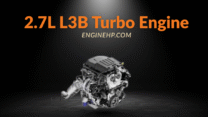
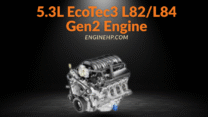
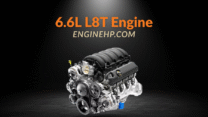
Leave a Reply